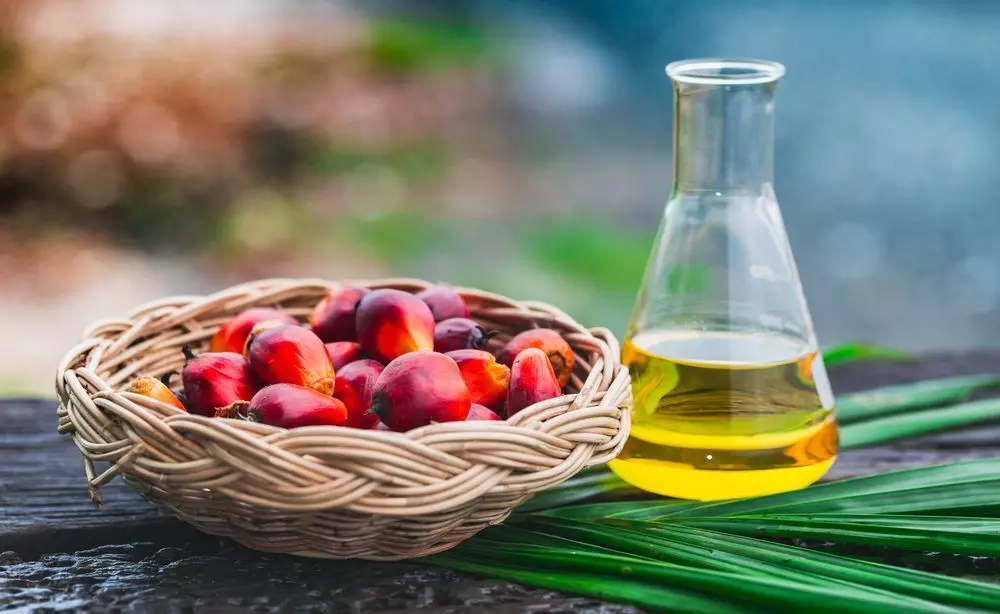Talking Shop: Slippery palms, oily fingers
A debate is sautéing at our dinner tables. Spats over spices are overshadowed by a tussle that is deep-fried and appears motivated, steeped as it is in palm oil

“Family fights bring out
the ugly in everyone. And
as they say, beauty is
only skin-deep, but ugly
goes clear to the bone.”
—Cynthia Goedde
In her quote above, Lady Cynthia couldn’t be more correct. Thus, it is she, not me, who has started off your Monday-week with the philosophy below. Till the going is good, everyone is. It is only when the chips are down that the little ugly ducklings in our character, carefully tucked away in dark recesses, start quacking. Our internal parts are calibrated in a manner that when the clutch and gearbox start twanging, the whole damned SUV starts clanging. That’s today’s unwholesome truth – many parts of India are clanging in a rude cacophony.
Amid all the obdurate clanging is one being witnessed at dinner tables, a squabble involving slippery palms and oily fingers. The decibel level is catching on too, overshadowing the spat over Indian spices and their alleged carcinogenic effects. The latest tussle appears to be deep-fried and, therefore suspicious, steeped as it is in palm oil. That we have then are some business-calibrators insisting that food cooked in palm oil is not good for our internals.
With a few bright sparks going to the extent of unsheathing daggers to take the squabble to sudden death, one is forced to wonder what is going on here, especially since the Indian Council for Medical Research and the National Institute of Nutrition say palm oil offers a spectrum of health benefits and have listed out a slew of scientific sludge to support this finding. Clearly, there are forces at play with counter-intuitive agendas. I cannot think of any other reason why Indians, in the midst of highly-churlish General Elections, are suddenly so enamoured of an issue not many have really cared a hoot about earlier – “Oye, tere wafers mein tel kaun sa hai?” (Hey, what is the oil in your potato chips?). It’s time to unearth the truth, for the chips are down on this one.
Kya chips, kaun sa oil?
The edible oil debate started in true grist a few weeks back, when a leading potato chip firm announced it would discontinue the use of palm oil and “replace it”, using healthier, heart-friendly options. Few read the fine print, which said the new blend of oils would continue to contain ‘palmolein’, with sunflower oil thrown in for good measure. That turned industry-watchers and wiser chip-hoggers turned into top gear, since the company’s own assertion revealed that a ‘filtrated’ palm oil version (which has higher oleic [39-45 per cent] and linoleic acids [10-13 per cent] content) would still be used. In short, it was admitted that in the larger scheme of things, palm oil is safe.
Quick research on Google shows that swapping palm oil for other variants does not lead to improved health outcomes. For instance, oils high in polyunsaturated fats, like sunflower oil, can become oxidized when exposed to heat or light, potentially causing inflammation and oxidative stress in the body. Sunflower oil also has a shorter shelf life compared to palm oil and, therefore, needs to be used up quickly or stored cold to prevent it from going rancid. “Palm oil handles frying without spoiling and its low production costs make it cheaper than frying oils such as cottonseed or sunflower,” experts added.
For the average chip-cruncher, what this means is that the packet of wafers we nonchalantly reach out to for comfort and mild sustenance is as healthy when made in palm oil as it is in any other avatar. Also, minus palm oil, the shelf life of that wafer pack would be curtailed drastically, making it more expensive to buy in the first place. Anyway, the story does not stop at chips and wafers.
In virtually everything
Before we try to deep-dive into the mystery of palm and other oil types, let’s catch our breath and see the products we use in our daily lives to figure out what all contains palm oil. Well, it seems to have made its way into everything. It is in nearly 50 per cent of packaged products – pizzas, doughnuts, chocolates, deodorants, detergents, shampoos, toothpastes, skin creams and even lipstick. The next time you dig into your favourite peanut butter and jelly sandwich, well, they contain palm oil. Chocolate spread, anyone? Yes, that has it too.
What’s going for it, some ask, wondering what the entire hullaballoo is about. Well, from the manufacturers’ perspective, it is economical, easy to procure and easier to store, with a longer shelf life. For producers of palm oil, yields are as much as 25 per cent higher than other crops, taking up far less land to cultivate and making it a winner as a quick-turnaround cash crop. For consumers, it makes products economical, makes them last longer and, according to experts, it has a slew of health benefits.
The WHO recommends limiting the intake of trans-fats to below 1 per cent of our energy intake per day. Palm oil has a low count on this front. The ICMR-NIN ‘Dietary Guidelines for Indians, 2024’ places palm oil alongside other oils such as groundnut, cottonseed, sesame and olive as it is rich in monounsaturated fatty acids, offering a plethora of health benefits. “Dietary fats contain minor components such as tocopherols, tocotrienols, sterols, etc. Tocotrienols reduce blood cholesterol,” the guidelines note. So far, so good.
What is the debate about?
If everything is so hunky dory, what are we squabbling about at dinner tables while sautéing carrots and broccoli? Frankly, I don’t know. But I have seen enough of the world to know that it can sometimes work in mysterious ways. Being palm oil-free would mean a blend of different oils such as sunflower, soy, coconut and others, creating more demand for those, which would in turn see more land being needed for cultivation. Some others would produce more of that stuff and business will get better for them.
If I were a Drama Queen, I would say this will lead to deforestation, Global Warming, rising seas, lower water tables, employment-led migration, congestion and pollution, all harmful for the environment and the Planet. But I am not one for histrionics or cross-dressing – I can only see a paradox playing out, fuelled by misinformation and lack of awareness. Daal mein kuchch kaala hai (the lentils are black). By the way, the last sentence sounds awful!
“What a culture we live in. We are swimming in an ocean of information and drowning in ignorance,” Richard Paul Evans said. That might be the answer to this paradox, as to why one thing is being pushed with so much might to blank out another, and why there is one side calling the other bad, wicked and all things evil. Think about that.
The writer is a veteran journalist and communications specialist. He can be reached on [email protected]. Views expressed are personal



